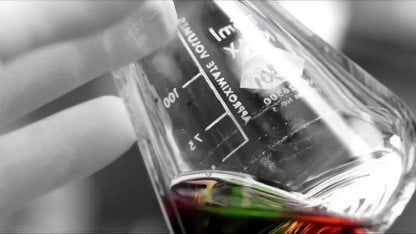REACH substance identification testing strategies to help you build a robust substance identity profile for REACH regulatory compliance
REACH substance identification is a core requirement for REACH registered substances. Substance identity is established through the substance name, related identifying numbers and information on the chemical structure, composition, and purity of the substance. Appropriate analytical data should be used to identify your substance for REACH purposes. Substance identity tests enable correct joint REACH registrations to be prepared.
To achieve REACH regulation compliance, spectra, chromatograms and other analytical information should be of good quality and fully interpreted and included in your REACH registration dossier. The European Chemicals Agency (ECHA) will review this data to clearly establish that the identity of your substance is correct.
Our scientists establish substance identity using analytical approaches as described in the Guidance for Identification and Naming of Substances under REACH and CLP document. Building the correct analytical strategy for substance ID from the start will save time and money and our experts are experienced at producing an analytical program that is both highly relevant for the substance of interest and meets the requirements of REACH including nanoforms, polymers, petroleum UVCBs and gases. We apply a range of analytical techniques including spectroscopy techniques to attain high quality spectra to confirm the molecular structure and suitable chromatographic methods to verify composition of the main constituent and purity/impurities.
Where there are difficulties in interpretation or challenges to conducting analysis, our team are experienced in preparing robust scientific justifications for dossier inclusion and can also design programs of alternative techniques with the necessary scientific justification and expert interpretation. Our global network of REACH testing laboratories has delivered test data with comprehensive interpretation since the inception of REACH and continue to support clients as they look ahead to the forthcoming revision of EU REACH chemical regulation. We have many years of experience delivering substance identity packages for both mono- and multi-constituent substances as well as nanomaterials or UVCBs.
REACH chemical substance id is also central to UK REACH compliance. Substance identity and the information requirements for this under UK REACH are the same as for EU REACH as described by the UK HSE.
Analytical Data to Build a Substance Identity Profile
With many years of experience our scientists design the most appropriate analytical programs to meet your REACH testing requirements. If it is deemed that further analytical data are required supporting the substance identification then our experts are able to rapidly identify what is required, communicate this to you and present a implementation plan that will deliver data with justification that is transparent, accountable and ensures consistency.
What techniques confirm a substance identity?
The standard ECHA recommended analytical techniques are Ultra-Violet (UV), Infra-Red (IR), Nuclear Magnetic Resonance (NMR) or Mass Spectrometry (MS), as well as High-Pressure Liquid Chromatography (HPLC) and Gas Chromatography (GC). If you do not include one of the recommended techniques, then it is advisable to provide a technical data waiver for it. Other techniques may be more appropriate, and it is the responsibility of the registrant to present appropriate spectral and analytical data.
Spectral Data
Our spectroscopy teams provide quality spectral data to confirm the structure of substances. Several spectroscopic methods should be used in combination, in particular ultraviolet and visible absorption spectroscopy (UV/Vis), infrared spectroscopy (IR), nuclear magnetic resonance spectroscopy (NMR) and mass spectroscopy (MS). We offer tailored packages as required, for example a minimum spectral data package would include UV-Vis, IR, MS and NMR plus a chosen chromatographic method such as HPLC or GC.
Inorganic Substance Identity
For inorganic substances we apply inductively coupled plasma spectroscopy with mass spectrometry (ICP-MS) or optical emission spectroscopy (ICP-OES), X-ray diffraction (XRD) or X-ray fluorescence (XRF). Ion chromatography is suitable for determination of anions and cations.
Chromatography Techniques
Chromatographic methods, such as Gas Chromatography (GC) or High-Performance Liquid Chromatography (HPLC) are needed to confirm the purity of the substance. If appropriate, also other valid constituent separation techniques may be used.
Isomer Identification
We provide specialist methods capable of identifying specific isomers, e.g. geometrical or optical isomers, particular salt forms, morphologies or any other defining attribute of the substance where relevant.
Nanomaterials Characterisation for REACH
The EU Regulation 1907/2006 [REACH] amendment 2018/1881, effective since January 1, 2020, focuses on regulating nanoforms of substances under REACH. It mandates specific legal obligations for companies involved in manufacturing or importing such nanoforms. Intertek offers comprehensive chemical and physical testing services to help companies comply with these evolving regulatory requirements, including nano-scale analysis covering particle size, shape, dispersion, crystallinity, surface area, surface chemistry / surface modification and composition and impurities.
Your Substance Identity Partner
With scientists who are experienced in structural elucidation, composition, purity and impurity testing and trace species analysis our substance identity services have played a key role in registration dossiers supporting the previous REACH deadlines for multiple clients around the world as part of our comprehensive suite of testing, Dossier compilation and Consulting solution. Our consultants have significant successful experience with the REACH Inquiry process where the data has been directly reviewed and evaluated by ECHA.



